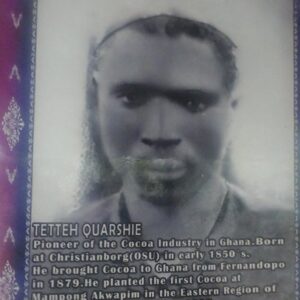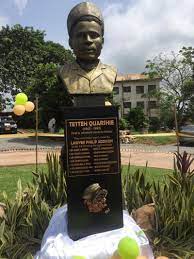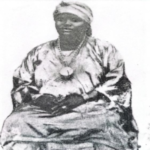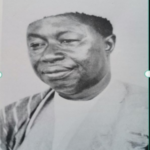
Tetteh Quarshie (1842-1892) is acknowledged to be the man who made cocoa cultivation a prosperous industry in the Gold Coast (now Ghana), and so laid the foundation of the country’s economic progress in the 20th century.
He was born at Osu in 1842, he was the son of Mlekuboi, a farmer from Teshie to the west of Accra. According to Basel Mission records, he was freed as a boy from pawn slavery by the Mission and trained as a black smith. After working for the Mission for some years, he migrated to the Island of Fernando Po (now part of Equatorial Guinea) in 1870 to work on the cocoa plantations there. On his return home in about 1878, he smuggled some cocoa pods to the Gold Coast and planted them on a plot granted him by the Badu family in the Mampong-Akuapim region in the southeast part of what is now called Ghana.
The claim that Tetteh Quarshie introduced cocoa into the country is however false. The Basel missionaries had tried unsuccessfully to grow cocoa in nearby Akropong long before Tetteh Quarshie left for Fernando Po. By the time he returned, the missionaries had discovered that their mistake lay in planting the cocoa in the sun without shady trees around.
This mistake was avoided by Tetteh Quarshie on his farm in mampong and several farmers in Akuapem later bought some of the seeds at £1 a pod and planted them in Akuapem and in Akyem, further west. The Basel mission later imported cocoa seeds in large quantities and the Gold Coast Agricultural Department established nurseries for the crop. The first cocoa harvest was in 1883 and the first export was in 1885. Cocoa seedlings were also exported from the Gold Coast to Nigeria and Sierra Leone. When there was a great demand for cocoa pods, a cocoa nursery was established by the governor, Sir W.B Griffith (in office intermittently between 1885-1894) at the Aburi Botanical Gardens, 20 mi (32 km) northeast of Accra. Export of cocoa beans in the period 1900-1904 was at an annual average of 2,250 tons. By 1911, Ghana had become the foremost producer, producing about one third of the world’s cocoa crop.

On February 25, 1925, the relatives of Tetteh Quarshie who had become very poor petitioned Governor Gordon Guggisberg (q.v) term of office (1919-1927) for funds. Dr. J.E.K Aggrey (q.v) persuaded Guggisberg to grant the request and after two years delay, the government voted £250 in 1927 for the family. A sum which Nana Ofori Atta I (q.v), ruler of Akyem Abuakwa considered inadequate through his suggestion for a higher amount not accepted.
After J. W. Hammond, a nephew who succeeded Tetteh Quarshie had sent Guggisberg pictures of Tetteh Quarshie’s cocoa trees in 1926, Guggisberg replied to thank him and promised the government would later honor in a fitting manner the memory of the man who had made cocoa the mainstay of the country’s economy. In 1928, a Tetteh Quarshie scholarship was established at Achimota College. After independence the Ghana government built a Tetteh Quarshie Memorial Hospital at Mampong-Akuapem near the site of his farm.


